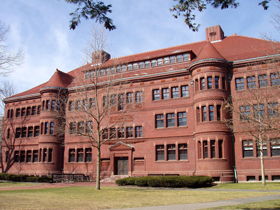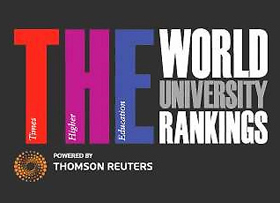Long-term economic projections and predictions about the development of university education boast at least two common features. First, projections based on existing trend assumptions offer the least reliable results. Second, in both cases, most researchers regard globalization as the principal development pattern. While keeping in mind these unreliable projections, let us now turn to the role played by global competition in the development of higher education.
Long-term economic projections and predictions about the development of university education boast at least two common features. First, projections based on existing trend assumptions offer the least reliable results. Second, in both cases, most researchers regard globalization as the principal development pattern. While keeping in mind these unreliable projections, let us now turn to the role played by global competition in the development of higher education.
The future universities in the 21st century will largely be determined by how successfully they are in this competition for talent. For some leading universities, this competition will stretch beyond their national borders, becoming truly global.
The talent available can be split into three categories: the best students; faculty and researchers; and professional university managers. This order reflects the phased development of global competition between universities. First attracting foreign students to strong national schools, e.g. in the UK and Germany in the late 19th - early 20th century, then increasingly intensified faculty employment on the global labor market, particularly in the late 20th century, and then the advent of a similar global market for professional university managers.
International University Competition
What causes this international competition between universities? And why do we expect it to grow?
First, universities and graduates compete directly for employers. Numerous economic surveys have shown that companies operating both domestically and internationally are, as a rule larger and more profitable than their local counterparts that are confined to their country of origin. Consequently, they enjoy more opportunities to offer competitive pay packages and fund their HR development programs. Transnational companies (TNCs) are also more innovative and so attract gifted university graduates. In other words, TNCs are the preferred employers for top graduates in various countries. Globalized competition between universities over graduate employment in this case follows on from the employer’s globalized operations.
Second, indirect competition between universities has surged in recent years, thanks to comparison tools that have in the last decade. Previously their performance had been non-codifiable and unverifiable: a country’s professionals would function as some kind of indication about the national university rating scale. But since then, it has become possible to compare educational establishments by objective KPIs both domestically and internationally. Whereas until recently simply claiming that a university was “among the best in Europe” would suffice – now you have to have proof. This comes from two main sources, i.e. university ratings (see Tailing the Global Ratings), publication databases and citation indices, primarily Web of Science and Scopus (see Publish or Perish).
The effect of this indirect KPI-based competition between universities has yet to be reviewed. The phenomenon is now just 7 to 8 years old, but it is nonetheless significant. A university’s position in these global ratings has become both a matter of concern for governments and, often a precondition for corporate partners’ investment in universities. A university’s rating impacts directly on the quality of students and faculty that it attracts. In the Russian Federation, the entry of five national universities into the TOP100 became an official objective – set out in a presidential decree dated May 7, 2012.
In this respect, the Moscow and St. Petersburg and other state universities “compete” with those in other countries, although this “KPI-based” competition is not as yet accompanied by similar competition for students, faculty and corporate partners. In the end, the goal of indirect competition among leading universities is to be a stepping stone to direct competition in the final markets for the products, i.e. training programs and research, and for resources (faculty, private sector support etc.)
Turning from economics to management, one can posit that we are witnessing a transition from global comparability between universities to global competition. This is primarily built on product comparability, i.e. training and research programs. Hence, the aspiration to adopt uniform educational levels, with the Bologna Declaration, which has brought together nearly all the countries in Europe (note, too, that a similar transition is underway in Asia and the Middle East) a particularly positive example of this, alongside the proliferation of standard programs that some countries lacked, such as MBAs. Greater comparability between research programs leads to stiffer requirements, an in Russia, to the publication of research outcomes in international journals, using citation indices and the journals’ impact as qualitative indicators.
Global Competition and Requirements for Universities
Product comparability necessitates modifying university management. As the quality of products made at a Russian car plant cannot be raised to European standards without radical management changes, so too university training programs’ global comparability is impossible unless the multiple-source funding model, the institution’s organizational structure and culture are all changed. Creating a bilingual communication culture (i.e. using national and English languages) and improving university attractiveness for both faculty and students from other countries seem to be the most problematic tasks on this list. It was the organizational comparability that engendered the new global labor market of professional university managers.
Global competition seems a natural development path for the various countries’ leading universities to follow in the 21st century. Yet what lies in store for universities that are not leading institutions in their home countries? One might expect an increased differentiation within these national university systems. The leading players will leave second group behind. The second group will also be involved in globalization, but this will be at quite another level, i.e. through student exchanges and fulltime studies at similar-level educational establishments abroad, hiring some foreign faculty members, but with no detriment to their own organizational culture. In other words, these universities may be globally comparable, yet they are unlikely to be proactively involved in international competition. Conversely, those that fall outside these two main groups will chiefly provide graduates at a local level, and research will not be a priority. It is university positioning which is under review, not differences in training program quality. Being in the second group does not necessarily imply lower-quality curricula.
Is the World Flat for Universities?
So, can we expect the 21st century to be a period of virtually unfettered competition between leading universities both internationally and domestically? This was the idea well-known US journalist Thomas Friedman used in the title for his bestselling book The World is Flat, in which he considered how these processes unfold, chiefly in the corporate world. It seems that the world of higher education will not suddenly become “flat” and the leading player differentiation will live on. There are no grounds to think that, once the curricula have been streamlined, students or faculty members will become indifferent to where they study or work, or that, once salaries and access to academic resources are equal, professors will not care where they teach. A university’s location will still matter, i.e. its proximity to innovative companies, e.g. in “global cities,” or other educational and research centers will continue to be relevant. Location is a strategic resource for universities, helping them retain a competitive edge for a considerable time. Other similar resources include their brand, organizational culture, and alumni community. All these factors impose objective limitations on newcomers to the global educational services market that seek to work their way up into the champions’ league.
Global competitiveness will be key in how the leading national universities develop in the 21st century. The very concept of “leading status” will be determined by their ability to compete successfully in the global marketplace. However, this competition relies on ensuring that universities are offering products (programs) that are comparable, and that this comparability extends to their organizational or management setup.








